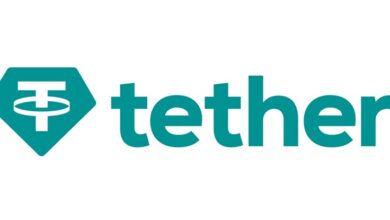The Power of Media in Shaping Crypto Perception: Exploring the Nexus Between Crypto and Reporting

The world of cryptocurrency, with its relentless innovation and disruptive potential, has captivated the attention of both mainstream media and financial enthusiasts. In an era where information flows at the speed of light, the power of media in shaping public perception cannot be underestimated.
This piece dives into the captivating discussion held during an online webinar hosted by HAYVN, a digital asset-focused financial institution and significant player in the crypto ecosystem.
The webinar titled “The Media and Cryptocurrency: The Evolution of Digital Assets Reporting” brought together a distinguished panel to explore the intricate relationship between media portrayal and the ever-evolving landscape of cryptocurrency.
The panel included Dr. Demelza Hays, Chief Economist at Cointelegraph, Dan Ashmore, Head of Research at Inverse, Ayush Tripathi, Research Analyst at HAYVN Research, and Walid Abu Zaki, Founder and CEO at UNLOCK Blockchain.

Drawing an analogy with the expression “the pen is mightier than the sword,” Christopher Flinos, CEO of HAYVN and the host for the webinar, underscored the exceptional power wielded by the media in the realm of cryptocurrencies. With the memory of the ICO craze, where marketing could spell instant success or downfall, still fresh, he noted how mainstream media often amplifies the negative aspects of the industry. This tendency to focus on the sensational and negative narratives underscores the challenges faced by the cryptocurrency world, particularly when trying to engage traditional finance audiences.
Delving into the intricate dynamics between media and cryptocurrencies, the host engaged the panelists through a series of thought-provoking questions.
Media’s Power and Pitfalls
Dr. Demelza Hays brought her seasoned perspective to the forefront, drawing from her extensive experience. She delved into the theme of media’s pivotal role in crypto cycles, acknowledging the cyclicality of market booms and downturns. Dr. Hays underscored the urgency of addressing media-propagated misconceptions, while emphasizing the amplifying impact of media portrayals on market volatility.
Reflecting on the past ICO frenzy, she highlighted how media coverage significantly contributed to the rise and subsequent downfall of various projects, emphasizing the necessity of responsible journalism within the crypto realm. In fact, Dr. Hays strongly emphasized media’s responsibility in providing accurate and balanced information, particularly when navigating the waters of volatile crypto markets, accentuating the influence of media due to the industry’s lack of regulatory oversight.
Dan Ashmore, with his research-focused background, shed light on the polarizing nature of cryptocurrencies, particularly Bitcoin. He attributed this polarization to the online nature of the asset class and its prominence within the realm of social media, contributing to heightened emotions and excitement.
As a researcher straddling the realms of journalism and analysis, Ashmore emphasized the unique position he occupies, providing a glimpse into the heart of the crypto storm. He remarked on the industry’s unprecedented volatility, noting the challenges of quantifying risks and returns due to the limited historical data available compared to traditional financial markets.
Walid Abou Zaki, the Founder and CEO of UNLOCK Blockchain, shared his insights on the evolution of crypto news over the years. He discussed the challenges that mainstream media has faced in grasping the complexities of crypto, which often lead to incomplete or biased stories.
Another factor is the size and impact of the crypto industry on the media itself. Unlike established industries such as banking or automotive, the crypto industry hasn’t yet solidified its presence with proper PR, marketing, and media investment. This can result in less understanding and motivation for mainstream media to allocate resources to cover it.
While crypto-focused media outlets strive to carve out a positive narrative, aided by the increased availability of data from various tools that help track market trends and financial movements, mainstream media appears to allocate considerable space to negative news and misconceptions about crypto. This tendency might be influenced by traditional industries disrupted by the crypto sector.
It’s worth noting that the crypto industry is still relatively new and different from the familiar traditional sectors. Walid reminded us that although there’s growing attention on crypto, efforts are still needed to ensure that news coverage remains impartial and accurate.
A Nuanced Shift: From Negativity to Complexity
Dr. Hays was further prompted to discuss key events that may have contributed to media shifts. The recent lunar FTX event was raised as an example, and she contemplated whether media reactions had evolved to become more nuanced. She acknowledged that over the past decade, the crypto media’s content and tone had transformed, aligning with the industry’s maturation. While mainstream media has demonstrated mixed behavior, varying between unbiased inquiries and misinterpretations, the diversification of data sources and the emergence of responsible reporting are slowly influencing the media narrative.
Analyzing Media’s Impact on Cryptocurrency Prices and Sentiment
The conversation transitioned to Ayush Tripathi, who delved into how media coverage can impact cryptocurrency prices, sentiment, and overall market volatility. He cited a research paper that harnessed natural language processing and analyzed 36,000 news articles across 500 cryptocurrencies, revealing intriguing insights. It turns out that news unrelated to cryptocurrency trends increased overall market volatility, while relevant news contributed to the reduction of volatility for the top 10 cryptocurrencies. Outside the top 10, both relevant and irrelevant news led to increased volatilities, emphasizing the role of media in shaping market dynamics.
The Significance of On-Chain Analytics and Data
The value of on-chain analytics was highlighted as a game-changer in the industry. The ability to analyze blockchain data can provide valuable insights into trends, holding behavior, and overall network activity. While on-chain analysis has the potential to revolutionize due diligence, panelists noted the risks of misinterpretation by those not well-versed in the field. Proper education and context were deemed crucial to prevent inaccurate reporting and the propagation of misinformation, which could fuel negative hype cycles.
Christopher addressed the absence of consistent and transparent reporting in the cryptocurrency industry. The lack of regular disclosures and quality reporting from companies raised concerns about the scarcity of factual data for analysis. The host emphasized the importance of establishing a solid foundation of data for accurate analysis, beyond sensational news or spin generated for attention. This challenge was viewed as a core problem within the industry, hampering its ability to establish credibility and enable meaningful analysis.
Varied Approaches and Evolving Insights
Dan chimed in, expressing a strong agreement with the sentiment shared earlier. He highlighted the complexities of assessing companies in the cryptocurrency space, drawing attention to the challenges of verification and assessment. He illustrated this with examples from recent events related to FTX and Binance.
He also emphasized the difficulty in making neutral assessments due to the lack of transparent reporting and verifiable data, which can sometimes make the industry’s trust-based nature ironic.
Given the swift pace of the crypto landscape, the conventional cadence of year-end or quarterly statements is inadequate. Walid emphatically advocated for the implementation of robust real-time communication channels that transcend the confines of mere tweets, especially when addressing critical developments. Moreover, he accentuated that the rest is on the crypto industry itself to foster a culture of responsible self-governance. Drawing insights from the well-established financial legacy system, the sector should adopt pivotal measures that deter insider trading, fortify the security of client funds, ensure meticulous asset custody, and institute rigorous external audits. By conscientiously adhering to these commendable standards, the crypto industry can reinforce its credibility, restore trust, and pave the way for widespread mainstream acceptance.
Dr. Hays also highlighted that her interest in Austrian economics and sound money informs her fundamental analysis perspective. She noted that her team has specialists in technical analysis and on-chain analysis, and they collaborate closely with the cryptocurrency community to gain insights and feedback. The team strives to engage with their readership and focus on writing comprehensive quarterly reports that address various crypto-related topics, which is what the industry needs at all times – data.
The integration of blockchain and on-chain analysis has provided them with valuable insights into the industry, helping them understand usage trends and the economic viability of projects.
Dan emphasized the ongoing uncertainty and limited sample size when assessing the effects of macroeconomic trends on cryptocurrencies. He noted the influence of major events like the COVID-19 pandemic on the market’s behavior and expressed the need to differentiate between different sections of the industry while acknowledging the challenges posed by large players.
Evolving Landscape and Media’s Role
As the discussion reached its conclusion, Walid provided insights into how the narrative in the cryptocurrency space has evolved. He reflected on the early days of blockchain and cryptocurrency education in the Middle East and highlighted the progress made in terms of awareness and understanding. He also emphasized the importance of effective regulation and marketing efforts by countries like Dubai.
Dr. Hays closed the conversation with her observations on mainstream media coverage. She mentioned that while mainstream media often highlights negative news and fear-mongering stories, those who work in the industry continue to be practitioners and work towards broader adoption. She anticipated that as the industry matures and digital assets become more integrated into everyday transactions, the current fringe movement might transition into the mainstream.
In the course of this engaging webinar, the panelists have enriched our understanding of the intricate dynamics between cryptocurrency and media. The insights shared underscore the vital role that media plays in shaping public perceptions of the industry.
As demonstrated throughout the discussion, media wields the power to influence the trajectory of cryptocurrencies, both positively and negatively. The evolving landscape of digital assets reporting demands responsible journalism that fosters accuracy, transparency, and balanced narratives. With each revelation and analysis, it becomes evident that the media’s role in the cryptocurrency realm cannot be overstated.
At the end of the day, the narratives conveyed by the media have a significant impact on how the world perceives this groundbreaking industry, ultimately shaping its destiny.





